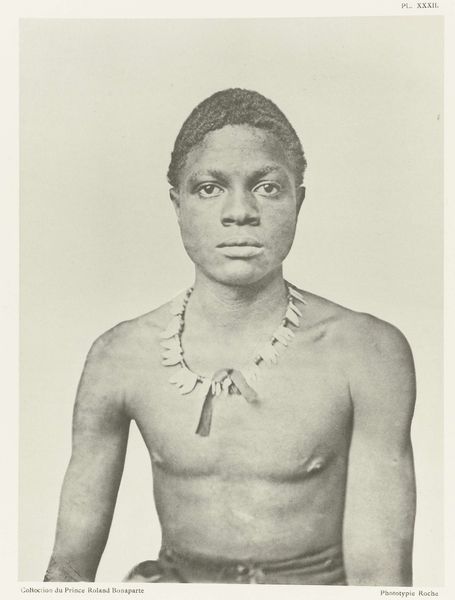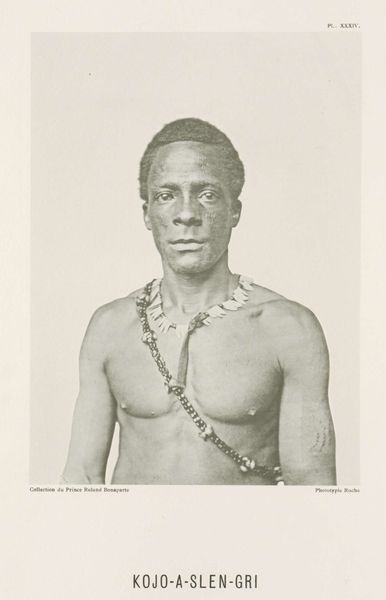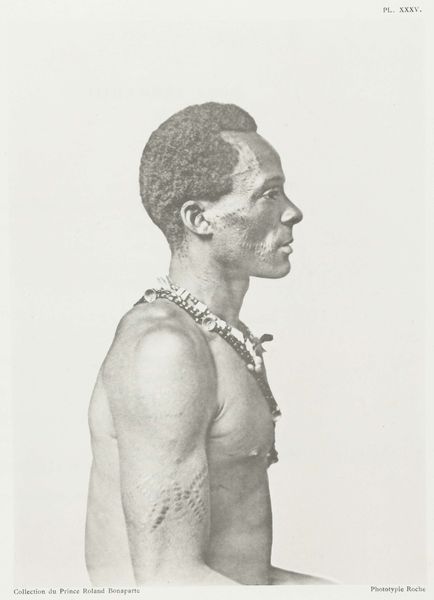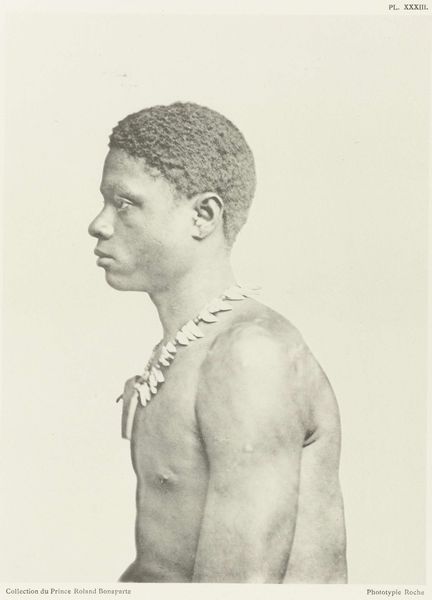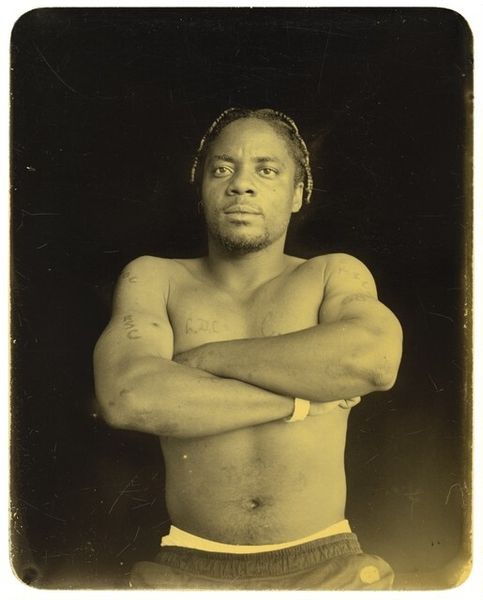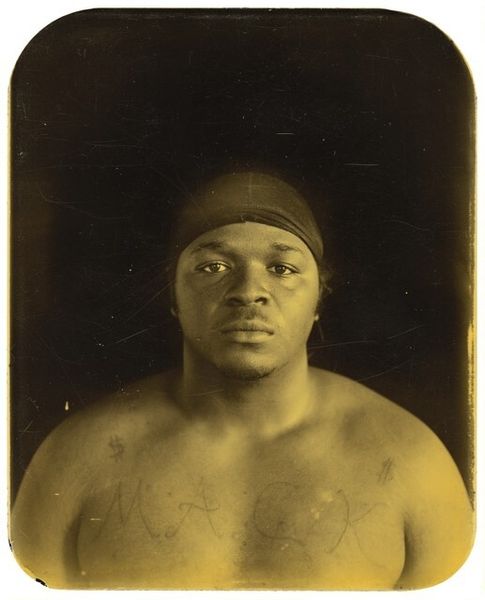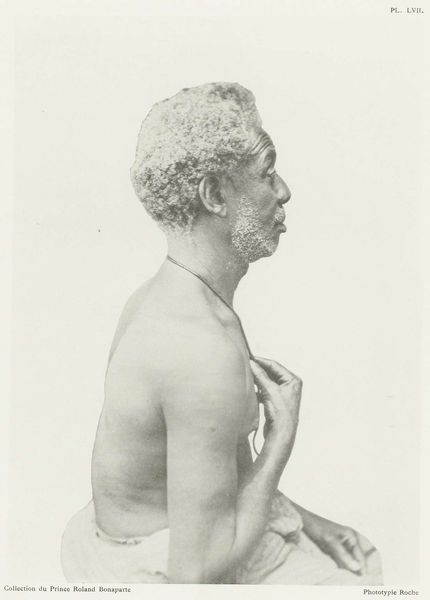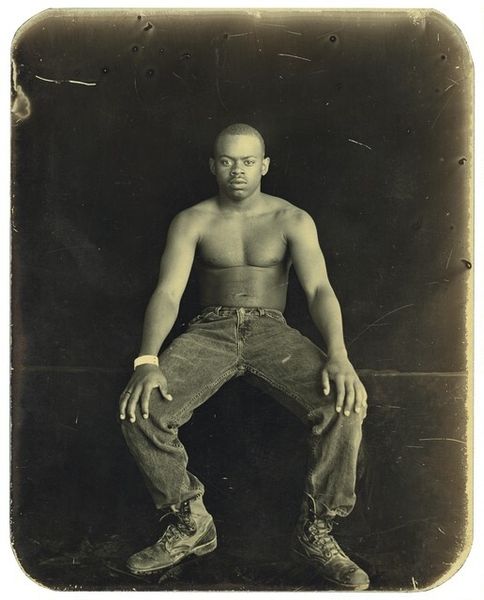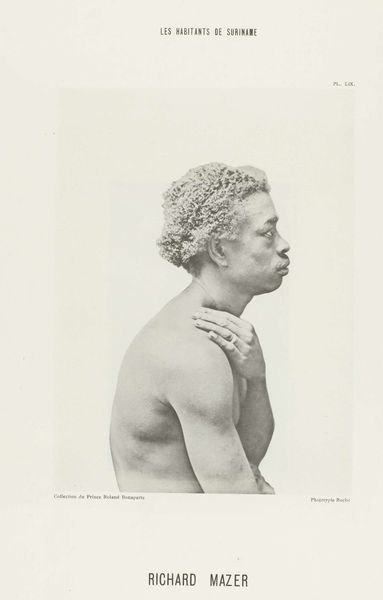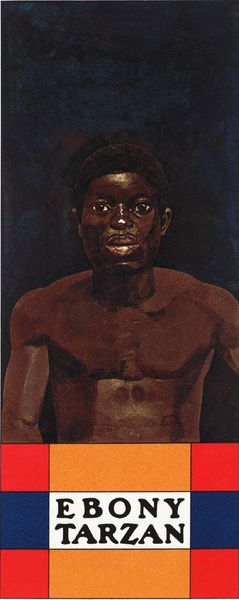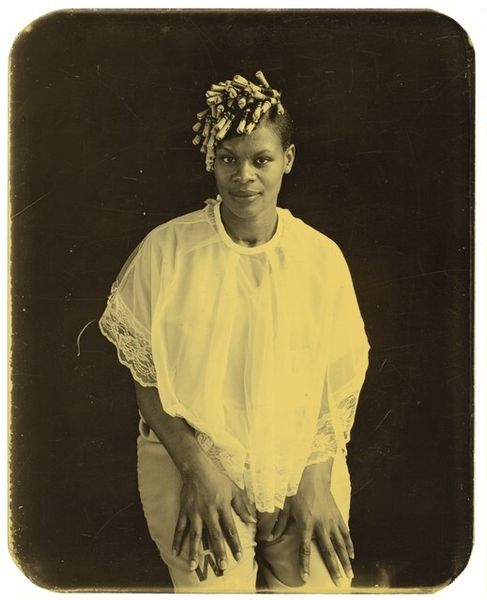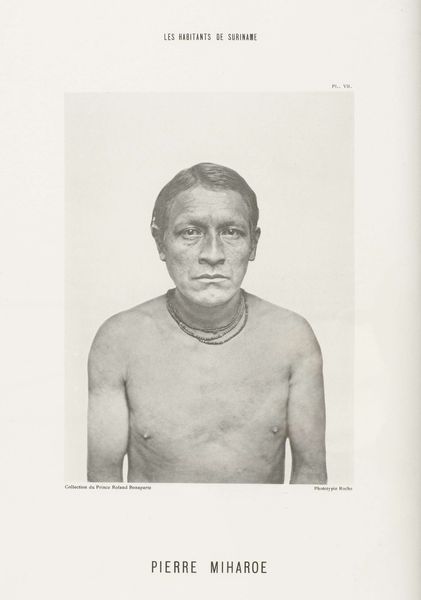
photography
#
portrait
#
african-art
#
portrait
#
photography
Dimensions: height 234 mm, width 168 mm
Copyright: Rijks Museum: Open Domain
Curator: Before us, we see Friedrich Carel Hisgen’s portrait, a photograph from 1883-1884 titled "Portret van Kwamina Baja," housed here at the Rijksmuseum. Editor: Stark! The composition’s arresting simplicity draws me in, all subdued tonality and direct gaze. It is compelling, though, at first viewing, somewhat emotionally detached. Curator: Observe how the phototype medium lends a distinct grain and texture to the image. It accentuates the nuanced interplay between light and shadow across Kwamina Baja’s face. Editor: The directness is what stands out for me. The photographer intended to convey objectivity, but inevitably, the viewer searches for signs within the frame, the hairstyle that hints at origin, the serious face with its implications. The symmetry almost demands analysis. Curator: The formal qualities—the arrangement of planes, the distribution of light, the calculated depth of field—all create a work of great consideration. It avoids becoming mere document, aiming instead for ideal type through careful rendering. Editor: Type or individual? Surely, we must see both. A Western artist gazing on an unfamiliar world with inevitable projection. Roland Bonaparte certainly brought with him certain assumptions of progress and difference, I'd say. I believe this informed his gaze here. Curator: I see your point, and it leads to questions about the artistic intentions during that colonial era. But let's also value the art object for its inherent aesthetics, the formal conversation between sitter and medium that transcends documentary value. Editor: Yet how to disentangle the cultural context? Photographs such as this one carried potent symbolic weight in representing—or, arguably, misrepresenting—entire cultures and human beings at the time. I’m most interested in the ongoing effect. Curator: Ultimately, whether we center our exploration in formal structure or interpretational framework, this image resonates in ways that encourage inquiry, inviting us to explore and see beyond. Editor: Exactly—visual records offer ever-shifting readings across time. Looking at it again I am thinking not about Roland Bonaparte’s intentions, but this image's function, circulating among us right now in 2024.
Comments
No comments
Be the first to comment and join the conversation on the ultimate creative platform.
